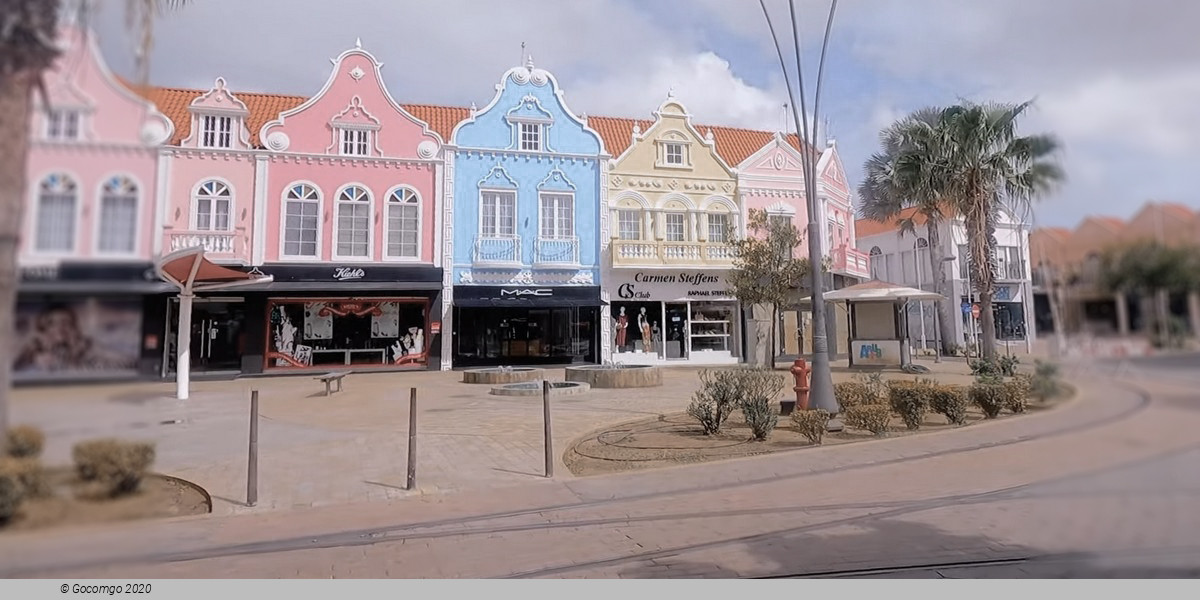Aruba

Aruba is a small Dutch island in the Caribbean off the coast of Venezuela. It is notable for its dry sunny weather, quiet waves and white sand beaches. Due to the constantly blowing trade winds in Aruba, there is always a light cool breeze, and the trunks and branches of divi-divi trees are twisted and tilted to the southwest. The local architecture was significantly influenced by Europe, as evidenced by the Dutch pediments, painted in pastel colors. Papiamento is spoken in Aruba, as well as English, Dutch and Spanish.
Aruba has a varied culture. According to the Bureau Burgelijke Stand en Bevolkingsregister (BBSB), in 2005 there were ninety-two different nationalities living on the island. Dutch influence can still be seen, as in the celebration of "Sinterklaas" on 5 and 6 December and other national holidays like 27 April, when in Aruba and the rest of the Kingdom of the Netherlands the King's birthday or "Dia di Rey" (Koningsdag) is celebrated.
On 18 March, Aruba celebrates its National Day. Christmas and New Year's Eve are celebrated with the typical music and songs for gaitas for Christmas and the Dande for New Year, and ayaca, ponche crema, ham, and other typical foods and drinks. On 25 January, Betico Croes' birthday is celebrated. Dia di San Juan is celebrated on 24 June. Besides Christmas, the religious holy days of the Feast of the Ascension and Good Friday are also holidays on the island.
The festival of Carnaval is also an important one in Aruba, as it is in many Caribbean and Latin American countries. Its celebration in Aruba started in the 1950s, influenced by the inhabitants from Venezuela and the nearby islands (Curaçao, St. Vincent, Trinidad, Barbados, St. Maarten, and Anguilla) who came to work for the oil refinery. Over the years, the Carnival Celebration has changed and now starts from the beginning of January until the Tuesday before Ash Wednesday, with a large parade on the last Sunday of the festivities (the Sunday before Ash Wednesday).
Tourism from the United States has recently increased the visibility of American culture on the island, with such celebrations as Halloween in October and Thanksgiving Day in November.
From the beginning of the colonization of the Netherlands until the beginning of the 20th century, the architecture in the most inhabited areas of Aruba was influenced by the Dutch colonial style and also some Spanish elements from the Catholic missionaries present in Aruba who later settled in Venezuela as well. After the boom of the oil industry and the tourist sector in the 20th century the architectural style of the island incorporated a more American and international influence. In addition, elements of the Art Deco style can still be seen in several buildings in San Nicolas. Therefore, it can be said that the island's architecture is a mixture of Spanish, Dutch, American and Caribbean influences.

